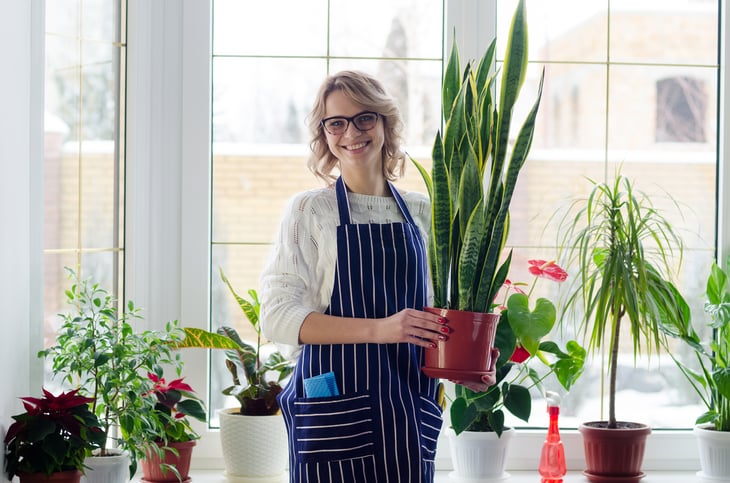
For our first Valentine’s Day, my husband brought home two dozen long-stemmed red roses. I told him he wasted money on a cliche that would be dead in a week.
The next year, he came home with a verdant houseplant. I told him how the peace lily would scrub our indoor air for years to come.
I’ve been fascinated by houseplants and their health benefits ever since I stumbled across landmark research conducted by NASA in the 1980s. It documented the ability of particular houseplants to remove harmful substances such as formaldehyde, benzene and trichloroethylene from indoor air.
Such substances, collectively known as volatile organic compounds, or VOCs, are emitted by synthetic materials, NASA explains. So, VOCs plague the air of space stations and homes alike.
The main scientist behind NASA’s research, B.C. Wolverton, went on to conduct further studies and write books like “How to Grow Fresh Air: 50 Houseplants That Purify Your Home or Office,” a personal favorite.
Other researchers have since corroborated and expanded on Wolverton’s findings. It turns out houseplants also can do everything from reduce the accumulation of dust to improve productivity.
The following houseplants are among the best at cleansing indoor air and offering other such benefits. The list also includes several beginner-friendly options.
A caution about plants

If you have pets or children, however, be sure to look up whether any plant is hazardous before bringing it home.
The American Society for the Prevention of Cruelty to Animals maintains a searchable list of plants that are toxic to dogs, cats or horses.
You can find lists of plants that are poisonous to humans on the websites of organizations like the nonprofit National Capital Poison Center and the University of California’s Division of Agriculture and Natural Resources.
1. Snake plant

Don’t be deterred by this plant’s common names, which also include “mother-in-law’s tongue.” It’s ideal for folks with a black thumb.
The snake plant can survive with dim light and sparse watering. It’s so tough that it’s among a handful of houseplants that Costa Farms, one of the largest wholesale nurseries in the U.S., markets as “Plants of Steel.”
The snake plant is also among a few houseplants known for producing oxygen at night. So, consider it for your bedroom.
2. Chinese evergreen
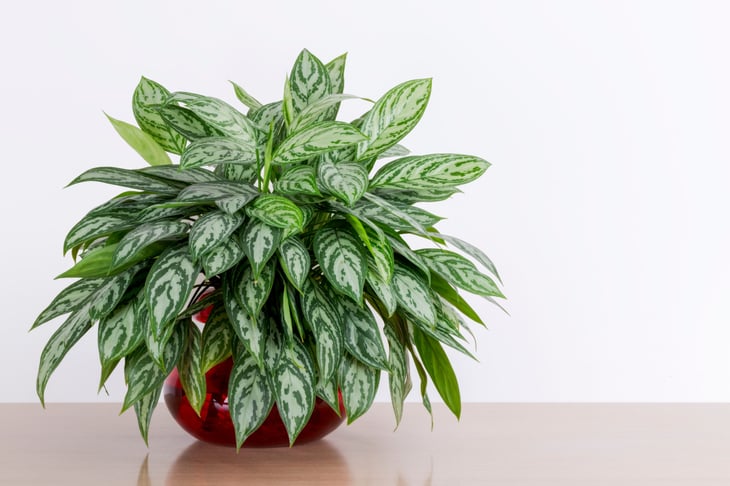
Also referred to as Aglaonema, a reference to the plant’s scientific name, Chinese evergreens are another air-purifying “plant of steel” known for tolerating low light.
The particular variety studied by NASA is Aglaonema crispum “Silver Queen,” named for its green and silvery leaves. But there are many varieties of Chinese evergreen, each with different leaf patterns — Costa Farms’ website highlights 10 examples.
3. Aloe vera

This air purifier is also a medicinal plant. The succulent plant’s thick, fleshy leaves are filled with the aloe gel from which healing products have been made for centuries.
4. Boston fern
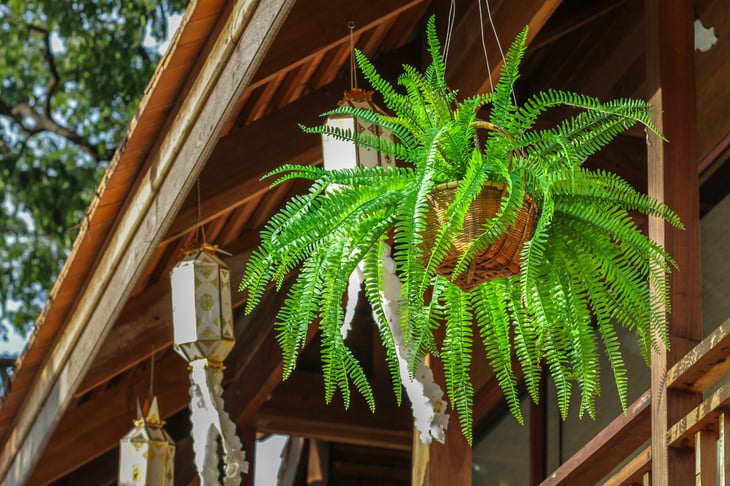
The Boston fern specializes in cleansing the air of formaldehyde, which is carcinogenic to humans, meaning it’s known to cause cancer in people. Of the 50 houseplants featured in Wolverton’s book, the Boston fern ranks No. 1 for removing formaldehyde gas from the air.
Small amounts of formaldehyde are found in nearly all homes and don’t lead to health problems for most people, according to the U.S. Centers for Disease Control and Prevention. But unhealthy levels can be found in homes with smokers and homes with new products made of certain substances.
The CDC says new products that tend to contain high levels of formaldehyde include:
- Some manufactured wood products such as cabinets, furniture, plywood, particleboard and laminate flooring
- Permanent press fabrics (like those used for curtains and drapes or on furniture)
- Household products such as glues, paints, caulks, pesticides, cosmetics and detergents
5. Lady palm
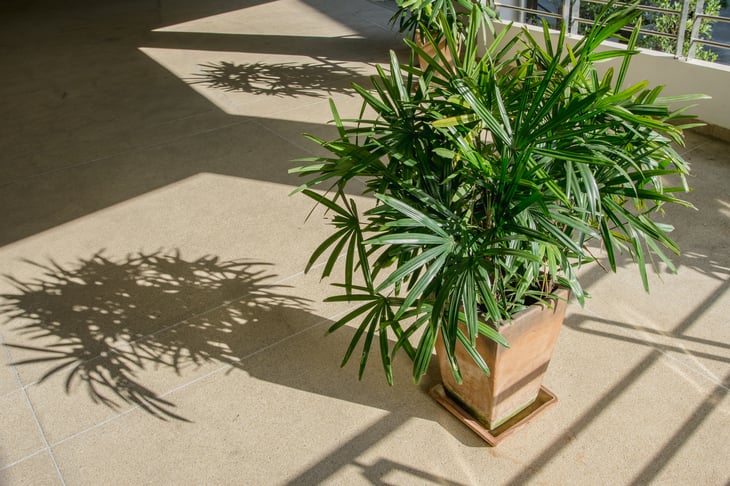
This palm excels at removing ammonia, landing it at No. 1 among Wolverton’s list of 50 air-cleansing houseplants for removing that unhealthy gas.
According to the CDC, you can be exposed to manmade ammonia at home if you use products that contain it, such as certain cleaning products, floor waxes and smelling salts.
6. English ivy
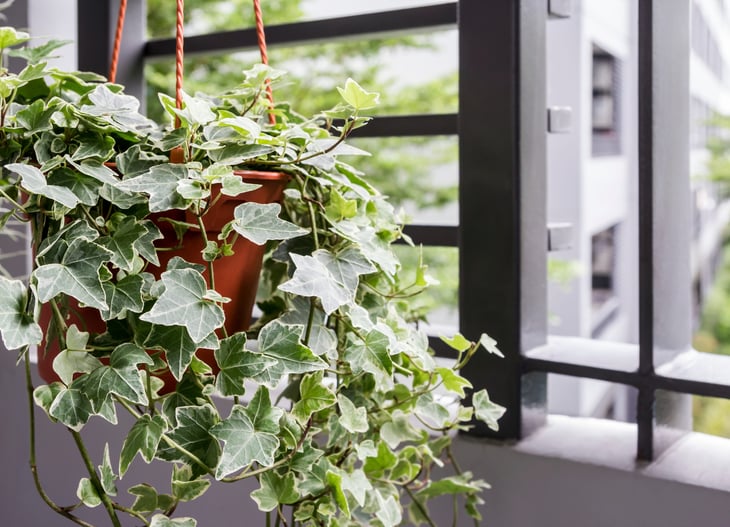
This vining plant’s air-purifying ability is more than just NASA-certified.
Researchers told the 2005 annual meeting of the American College of Allergy, Asthma and Immunology about a study that found English ivy can reduce the amount of allergens such as airborne mold and even airborne dog feces, according to WebMD.
Also, in 2009, research out of the University of Georgia found English ivy had one of the five highest rates of air-contaminant removal out of 28 plants tested.
7. Golden pothos
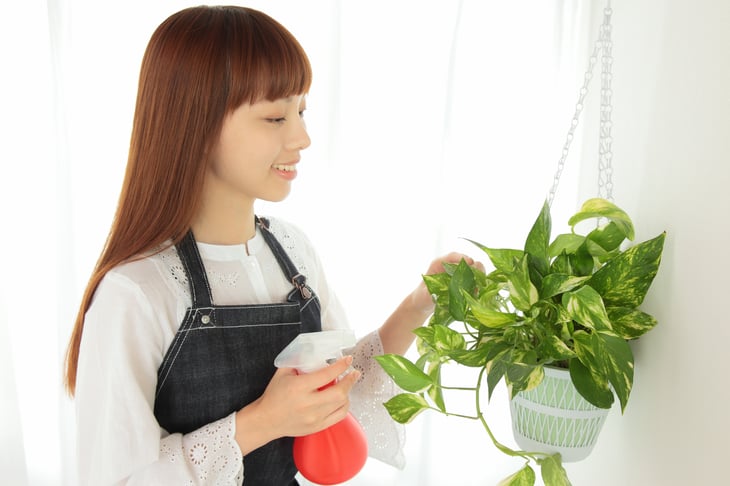
This vining plant is another air purifier known to tolerate neglect and lower light. It’s one of my favorites, along with the next plant on this list.
NASA studied golden pothos, or Epipremnum aureum, which has green and yellow marbled leaves. But other varieties commonly seen at national retailers also bear distinctive foliage: Epipremnum aureum “Marble Queen” has green and white leaves, and Epipremnum aureum “Neon” has almost-fluorescent chartreuse leaves.
8. Peace lily
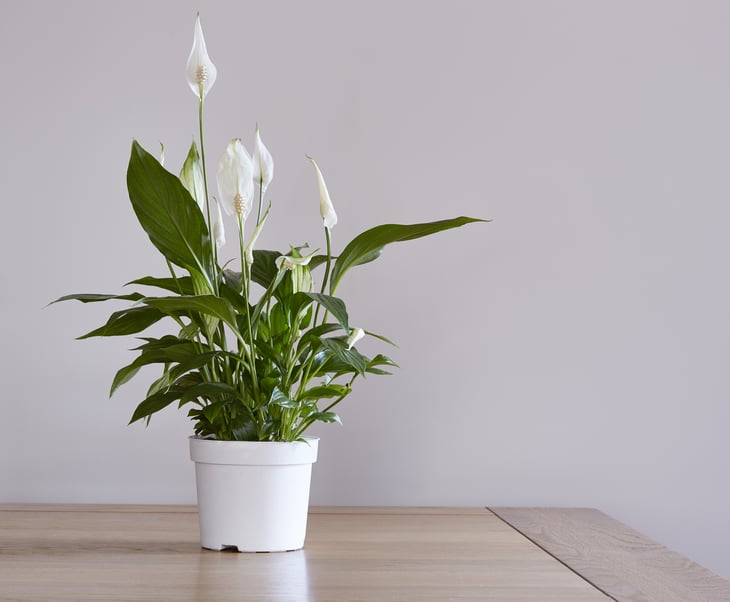
This houseplant will tolerate lower light — but it will bloom more with brighter light. It’s among the few plants that will bloom reliably indoors.
Peace lilies are also well-rounded air cleaners. NASA found that they remove at least eight chemicals, particularly acetone, from the air.
9. Spider plant
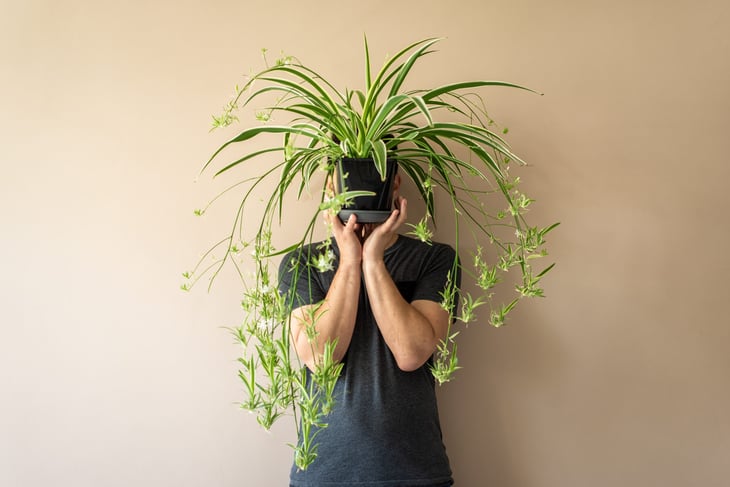
If you want to clean your air on the cheap, this is your houseplant. Spider plants are relatively easy to keep alive, and they can effectively clone themselves.
They grow umbilical cord-like shoots that bear baby spider plants, as seen in this picture. So, expanding your spider plant collection is about as simple as snipping off a “baby” and putting it in soil.





Add a Comment
Our Policy: We welcome relevant and respectful comments in order to foster healthy and informative discussions. All other comments may be removed. Comments with links are automatically held for moderation.